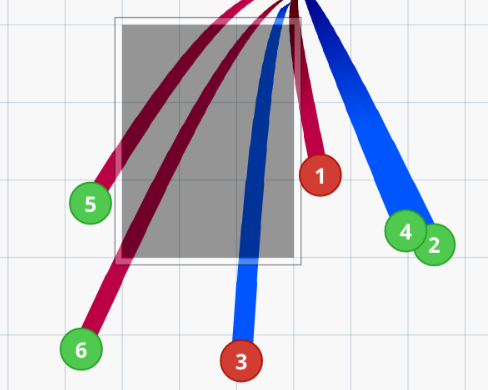Umpiring is prominent in critical juncture of Blue Jays win - and that's OK
Whenever umpiring takes centre stage in a baseball game it’s almost always considered a negative. If the calling of balls and strikes seems to play a role in the outcome you can bet you’ll see writers contort the idea “the fans came to see the players, not the umps” into every possible sentence structure.
The sentiment is understandable. No one is hoping for an “ump show”. Perhaps the most compelling aspect of baseball is the one-on-one brawl at the plate. That’s a more romantic image than “one-on-one plus an impartial adjudicator.”
However, sometimes a game hinges on tough calls — it’s simply unavoidable. For the Toronto Blue Jays, Wednesday night’s 3-2 win over the Tampa Bay Rays was one of those games.
The most crucial moment in the low-scoring contest came in seventh as Marcus Stroman loaded the bases at the tail end of a strong outing. Enter Aaron Loup, and home plate umpire Lance Barksdale’s heavy influence on the game.
Faced with right-handed slugger Steven Souza, Loup hovered around the outside corner with three changeups and a fastball putting the count at 2-2. That set Souza up perfectly for a fastball on the inside corner, which is exactly what he got.
Loup drilled one in at 92.5 mph and was sure he had his man only for Barksdale to call the count full. The southpaw lost him on the next pitch with an errant fastball to walk in a run and end his night. Coming to collect his pitcher, Blue Jays manager John Gibbons had a few choice words for the umpire that earned him his fifth ejection of the year.
“It was a big moment and there were some close pitches,” bench coach DeMarlo Hale said of the situation after the game. “Gibby’s got the back of his players and they love him for that.”
The thing is, for all the piss and vinegar, Barksdale was right.

He did the hardest part of his job — making a call near the edge of the plate — and he did it in a potentially game-defining spot.
The next man up to the plate was Evan Longoria, and with the Blue Jays up by just one with the bases loaded, new pitcher Dominic Leone was in a serious jam. According to FanGraphs, Toronto’s win expectancy sat at 50.7 percent, putting the the game in coin flip territory.
Leone worked Longoria with a series of fastballs and sliders until he had him at a familiar 2-2 count. The Rays third baseman fouled off a fastball just off the plate, and the right-hander came back with another pitch in the same spot — called strike three.

In this case Barksdale made the wrong call, but just barely. The pitch was well within the margin of error, almost indistinguishable from a strike. Its impact was monumental though — the Blue Jays win expectancy bumped up to 64.7 percent as the Rays would need a hit to plate a runner with two outs. They couldn’t find it, and would not score again as Ryan Tepera and Roberto Osuna took the Blue Jays to the finish.
When the game was at its turning point, two calls — one very slightly correct, one the tiniest bit wrong — played an enormous role in shaping it. That sounds like the sort of thing we’re meant to reject, but one call went one way and one went the other. Balance was restored.
That’s no guarantee to happen every time, but it happens more often than people who have a horse in the race realize. Blue Jays fans — and Gibbons — responded loudly in defiance of the Souza call, but hardly noticed that they gotta a little luck on the next batter.
In the ninth, it was Rays manager Kevin Cash who came out to complain about balls and strikes, and the final pitch of the game was none other than Souza getting punched out — on a correct call. Complaining about umpiring is fun for fans and managers alike, but it’s a difficult job generally done well.
When it’s prominent that doesn’t mean it’s bad, and when one team gets a tough call against them that isn’t a sign of persecution. Tough calls were prominent on Wednesday, but they cut both ways and there was no sign of true injustice to be found on the field, contrary to popular belief.

 Yahoo Sports
Yahoo Sports 

